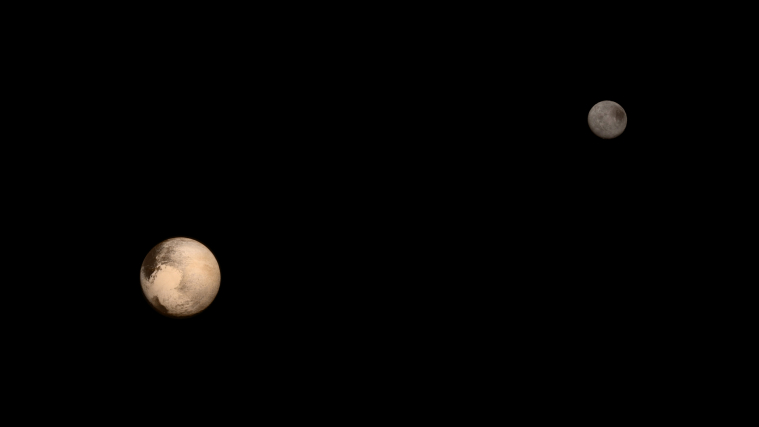According to the observations of Pluto, the dwarf planet began to lose its atmosphere, which had been increasing until now. However, scientists report that this is a cyclical phenomenon. Pluto’s atmosphere fades as it moves away from the sun.

Pluto and its atmosphere photographed by the New Horizons probe (Image: NASA/Johns Hopkins University Applied Physics Laboratory/Southwest Research Institute)
In 2005, the asteroid Eris was discovered. At first, it seemed larger than Pluto. Subsequent measurements showed that its diameter is tens of kilometers smaller than that of Pluto. And since the latter was a planet, Eris must also be.
In 2006, the International Astronomical Union solved the problem. It has been shown that the planet should “gravitationally dominate the area”, that is, there should be nothing massive about it. Pluto did not fulfill this condition and lost the name of a planet.
Some astronomers were against the case of “gravitational control”. However, without it, the planets would also include Eris, Charon, and dozens of other known objects. The number of planets in the solar system is likely to exceed 50.
Another problem was Charon, Pluto’s largest moon. It’s only twice as small and eight times lighter. They orbit a common center of gravity outside the surface of Pluto. For this reason, they called it a double planet – and now they are a double dwarf planet.
 Pluton e Charon (from NASA/Johns Hopkins University Applied Physics Laboratory/Southwest Research Institute)
Pluton e Charon (from NASA/Johns Hopkins University Applied Physics Laboratory/Southwest Research Institute)
Pluto has an atmosphere, too. Like Earth, it is made up mostly of nitrogen
However, Pluto has an important property for most planets – it has an atmosphere. Like Earth, it is made up mostly of nitrogen. However, it is extremely rare. The New Horizons probe, which arrived in this region in 2015, has measured that there are about 100,000. times thinner than Earth (The pressure is only about 1 Pa, compared to about a thousand hectopascals on Earth.)
It is difficult to notice an object so small and so far away. It is difficult to study such a rare atmosphere. So astronomers wait for events to be favorable to their observations. It is a stellar eclipse by Pluto. During a two-minute transit (or transit) in front of the star, its light shines through the planet’s atmosphere. This transition allows for its exact thickness and composition to be determined.
Scientists have been studying Pluto’s atmosphere using this method since 1988. Observations and astronomical data from the probe showed that Pluto’s atmosphere was bloated and nearly doubling in size every decade.
Why is Pluto’s atmosphere now bulging and shrinking?
This is because it travels around the sun in a very long orbit. During the 248 years that took one revolution, Pluto approached the Sun by 30 AU (I, AU is the Earth’s distance from the Sun) and then retreated by 50 AU. When the planet is closer to the sun, the ice on its surface sublimates, that is, turns into a gaseous state. When it moves away, the gas sublimates, that is, it becomes in a solid state.
However, the relationship between Pluto’s distance from the Sun and the thickness of its atmosphere turns out to be more complex. Scientists note that although Pluto was far from the Sun (it is now 39 AU from the Sun), its atmosphere continued to expand. This is due to thermal inertia. Just as water in a lake or sand on a beach stays warm long after dark, Pluto also warms up and cools down late.
The last transit of Pluto took place on September 15, 2018. During the two-minute observations of bright light across the edge of Pluto, astronomers found that its atmosphere was disappearing. Solid nitrogen deposits on Pluto’s surface were heated by heat that had built up below the surface. Dr Leslie Young, of the Southwest Research Institute, says the new data shows it’s starting to subside.
So Pluto could lose its atmosphere. But in 124 years, when it gets close enough to the sun again to warm it, a new one will appear.
Source: Southwest Research Institute




More Stories
Nvidia GeForce RTX 4090: AIDA64 gets Ada spearhead support
Rogue Trader – Details about the first cRPG in the series – CD-Action
t3n – Digital Pioneers | digital business magazine